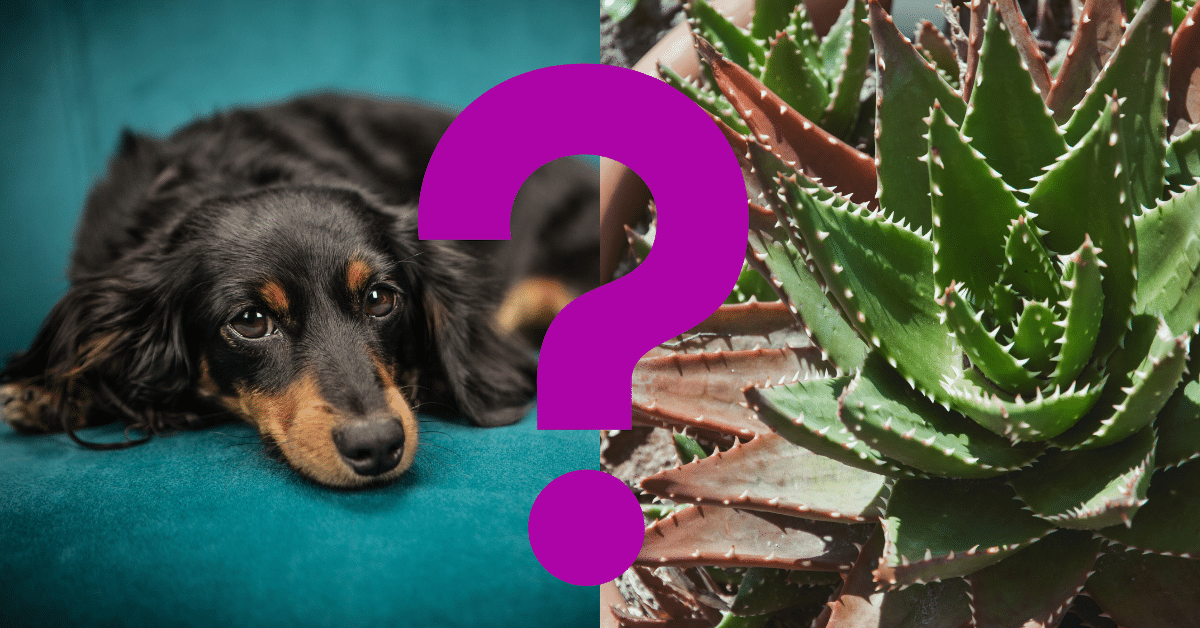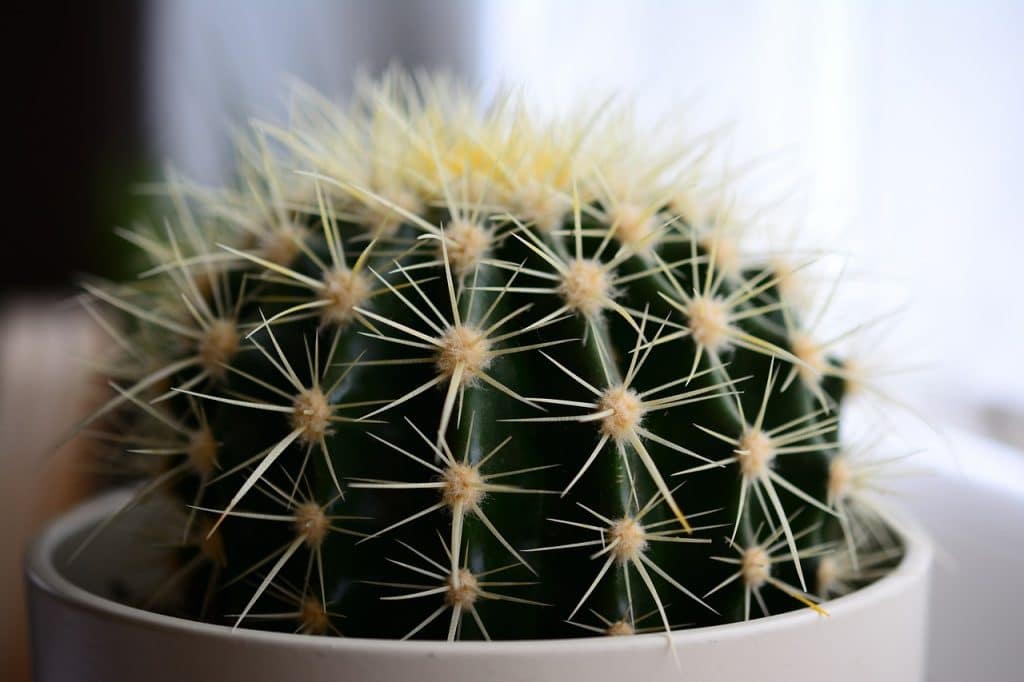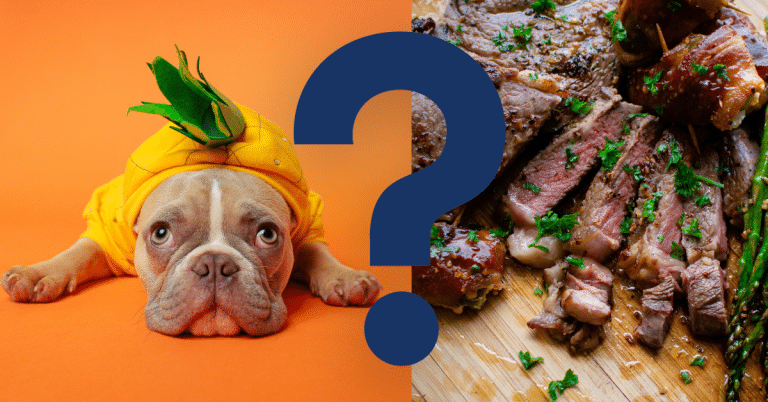Can Dogs Eat Cactus? A Vet’s opinion

cactus usually has spines but can dogs eat cactus?
It’s typically not recommended for dogs to eat cactus plants since they can be dangerous to them if consumed. Cacti have spines and could also contain compounds that might upset a dog’s stomach and lead to other health problems. It’s typically not recommended for dogs to eat cactus plants since they can be dangerous to them if consumed. Cacti have spines and could also contain compounds that might upset a dog’s stomach and lead to other health problems.
Let’s dive in:
Benefits Of Cactus For Dogs
When prepared and provided properly, cactus can offer some advantages to dogs, but it’s important to use caution and moderation. The following are a few possible advantages of cacti for dogs:
- Hydration: Prickly pear cactus has a high-water content. Small amounts of cactus can be fed to your dog to help him stay hydrated, particularly in hot regions or if he doesn’t drink enough water.
- Consuming cactus can help you get more dietary fiber, which helps improve digestion and control bowel motions. Small amounts of cactus might help maintain your dog’s digestive system in the diet.
- Vitamin C, vitamin B6, folate, calcium, and magnesium are among the vitamins and minerals found in cacti. These minerals may be helpful for the general health of your dog.
- Cacti are abundant in antioxidants, which can aid the body fight off dangerous free radicals. Antioxidants help your dog’s immune system and lower their chance of developing chronic illnesses.
- Weight Control: The fiber in cactus might make your dog feel full, which may assist with weight control by discouraging overeating.
But you must be extremely careful while giving cactus to your dog:
- Remove Spines: Thorns and spines on cactus should be removed before giving them to your dog since they are poisonous if consumed.
- Despite its potential benefits, cactus should only be consumed in moderation and sometimes as a pleasure. Due to its high fiber content, eating too much cactus might cause stomach problems.
- When adding cactus to your dog’s food, it’s crucial to watch out for any allergic responses because some dogs may be sensitive to it.
- Consult Your Veterinarian: It’s a good idea to seek advice from your veterinarian before introducing any new food to your dog’s diet, especially if you’re unsure about potential allergies or sensitivities.
In conclusion, cactus can help dogs in specific ways if used properly and in moderation. However, it’s important to exercise caution and keep an eye out for any negative responses in your dog, and speaking with your veterinarian before making any dietary changes for your pet is always a good idea.

How To Safely Give Cactus To Dogs
To make sure that you prepare and offer cactus to your dog in a way that minimizes any potential dangers, follow these instructions:
- Pick The Proper Kind Of Cactus: Prickly pear cacti (Opuntia spp.) are the safest cacti to give your dog. When properly cooked, this kind of cactus is less likely to be poisonous to dogs and is frequently ingested by people.
- Thoroughly remove any spines and thorns from the cactus before giving it to your dog. Peel or slice the cactus pads into manageable pieces after carefully removing the spines with gloves and a sharp knife. Make sure there are no remaining spines by being vigilant.
- While some people take cactus raw, it is safer for dogs to cook or steam it. By doing this, the cactus is softer and simpler for your dog to digest. The cactus may be steamed or cooked until it is soft, then cooled before giving it to your dog.
- Serve In moderation: Add little amounts of cactus to your dog’s food gradually. Start with a modest amount and watch your dog’s reaction. Keep an eye out for any digestive or allergic problems in your dog.
- Watch For Negative Reactions: After giving your dog cactus, keep a look out for any symptoms of discomfort, such as nausea, vomiting, or diarrhea. Stop feeding the cactus right away if you experience any unpleasant effects.
- Include Cactus In Your Dog’s Diet: You should sometimes offer your dog cactus as a treat or as a supplement to their usual food. It’s crucial to keep your dog’s diet balanced and it shouldn’t take the place of their major source of nutrition.
- Speak With Your Veterinarian: Consult your veterinarian for advice before introducing any new food to your dog’s diet, especially if you’re unsure about potential allergies or sensitivities. Based on the requirements and health situation of your dog, they may offer tailored guidance.
Always be cautious and watch your dog’s behavior when introducing new meals because some dogs may not like or tolerate cactus. Additionally, it’s recommended to err on the side of caution and speak with your veterinarian before giving your dog any cactus as a treat if you’re unsure about the kind or its safety for your dog.
Will Cactus Make A Dog Sick?
If not properly prepared and given, cactus may make a dog ill. Here are some explanations as to why cactus could harm dogs’ health:
- Sharp Thorns And Spines: If consumed by a dog, cacti can cause damage to the mouth, throat, or digestive tract. Before giving cactus to your dog, make sure all thorns and spines have been removed.
- Dogs can experience allergies or dietary sensitivities to particular foods, such as cactus, just like people do. Consuming cactus can have negative effects on your dog if they are allergic to it or are sensitive to it, such as itchiness, rashes, gastrointestinal distress, or more serious allergic reactions.
- Constipation: Cactus includes dietary fibre, which, when consumed in moderation, can help with constipation. On the other hand, giving your dog too much cactus all at once might cause digestive problems, such as diarrhoea or vomiting.
- Harmful Substances: Although prickly pear cactus meat is typically regarded as being safe for dogs, several cactus species do contain potentially harmful substances. It’s crucial to make sure the species of cactus you’re serving is safe for dogs and to cook it correctly.
By according to the previously provided advice, you may reduce the likelihood of getting your dog sick:
- Prickly pear cactus is the best sort of cactus to choose.
- Thoroughly remove all thorns and spines.
- To make the cactus more digestible, cook or steam it.
- Gradually incorporate cactus into your dog’s food while keeping an eye out for any negative responses.
- If you have any questions or if your dog has any health problems after ingesting cactus, speak with your veterinarian.
When introducing new meals to your dog, use caution and put their security and wellbeing first. It’s recommended to ask your veterinarian for specific advice if you’re unclear whether cactus is safe for your dog.

A Vet’s Summary
You may get professional advice catering to the requirements of your pet by asking a veterinarian about whether to give cactus to dogs. Veterinarians are qualified to answer any worries or inquiries you may have regarding the safety and propriety of giving cactus to your dog. They can also provide advice on your dog’s diet.
Consider taking the following actions before consulting a veterinarian about this issue:
- Make A Reservation: To chat with your veterinarian, make an appointment or see them for a routine checkup. It’s crucial to have a private conversation about your dog’s nutritional needs and any potential health issues connected to meals.
- Talk About Your Intentions: Inform your veterinarian that you’re thinking of using cactus in your dog’s food during the consultation. The size, breed, age, current food, and any allergies or sensitivities your dog may have should all be disclosed to them.
- Specify Your Inquiries: If you’re unsure whether cactus is safe for your dog, ask your veterinarian. Ask about the possible advantages and hazards of feeding cacti, as well as the proper portion sizes and preparation techniques.
- Adopt Their Suggestions: Follow your veterinarian’s advice on the introduction of cactus or any other dietary adjustments for your dog based on their evaluation. If it is considered suitable, they may offer alternatives or detailed instructions on how to properly introduce cactus into your dog’s diet.
- After adding cactus to your dog’s diet, keep a close eye on him to look for any negative responses or changes in his health. Contact your veterinarian right away if you see anything amiss for more advice.
In some circumstances, probiotics might be beneficial for dogs. Dogs that experience digestive issues including diarrhea, constipation, or irritable bowel syndrome may benefit from probiotics. They can balance out the good bacteria in the stomach once again.
Always keep in mind that a vet’s advice is priceless when choosing your dog’s diet. To guarantee your dog’s safety and wellbeing, they may consider their health, nutritional needs, and any potential sensitivities or allergies.
Videos To Watch
If you are wondering what to feed your dog, watch this:
If you are wondering what to not feed your dog, watch this:






